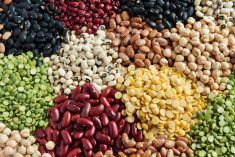MarketsFarm – As a spring wheat tour of the Northern Plains of the United States wraps up, grain traders are awaiting the results with great interest.
“That has wheat excited all over again, because (traders are) already well aware yields are going to be quite low,” said Ryan Ettner, broker for Allendale Inc. in McHenry, Ill. “To actually see pictures of it and people put numbers together, we should see another strong support bid.”
“As soon as the ‘good to excellent’ rating on spring wheat went below 30 per cent, trade was already ready to assume it was going to be a disaster,” he added.
Read Also

U.S. livestock: Cattle fall sharply as Trump says he’s working to lower beef costs
Chicago cattle futures fell sharply on Friday after U.S. President Donald Trump said his administration was working to lower the…
While hot and dry weather has already devastated the spring wheat crop, Ettner said he is paying attention to weather maps in order to estimate soybean yields ahead of the United States Department of Agriculture’s (USDA) supply and demand report to be released on Aug. 12.
“I really thought the weather maps were dry enough to justify a small bounce from current levels. For now, it looks like trade is quite happy for the price level for beans,” he said. “Next week, we get into August and that’s the key time frame for starting to change minds about yields. If the maps turn really warm or dry or add a whole bunch of rain, I think you’ll see beans do a heck of a lot more this week.”
The sentiment among traders, according to Ettner, is many expect average corn yields to be four to five bushels per acre below projections. As a result, bids for December corn have stayed at around US$5.50/bu. on the Chicago Mercantile Exchange (CME).
“I don’t think trade is ready to start assuming more than a four to five bushel (per acre) cut and they’re also not willing to assume the trend line (yield),” Ettner explained. “We think corn will stay this way until the August crop report.”
















